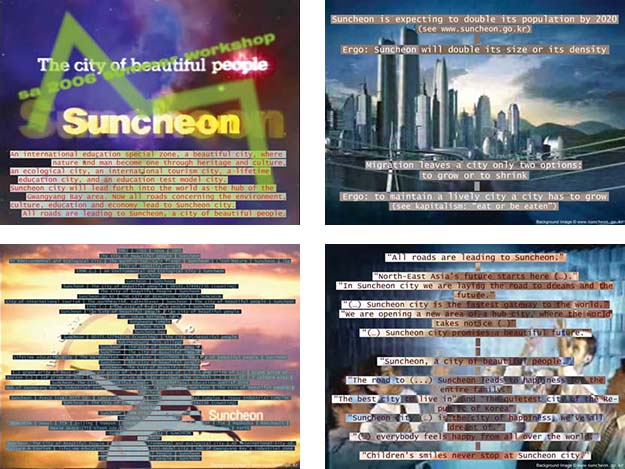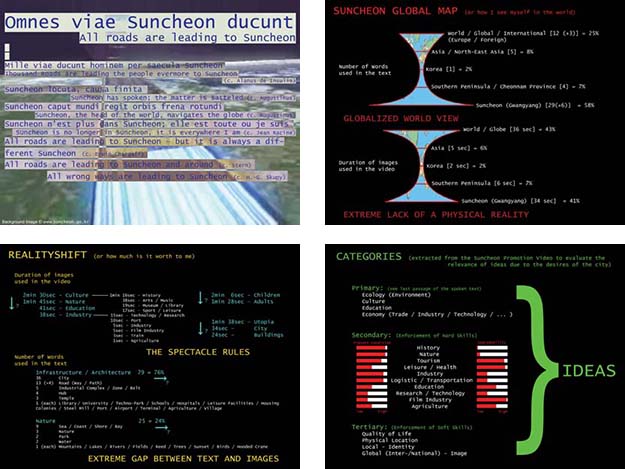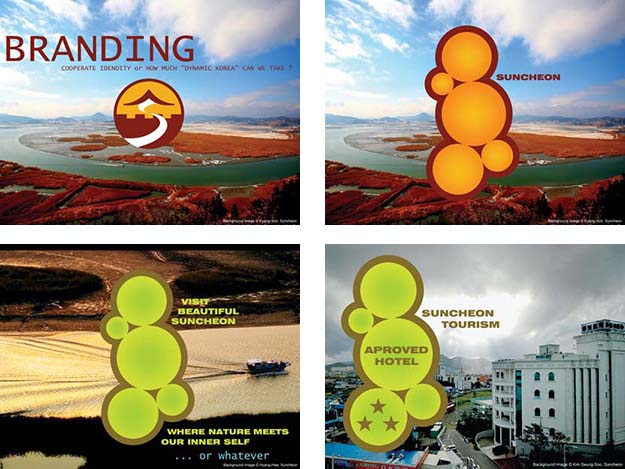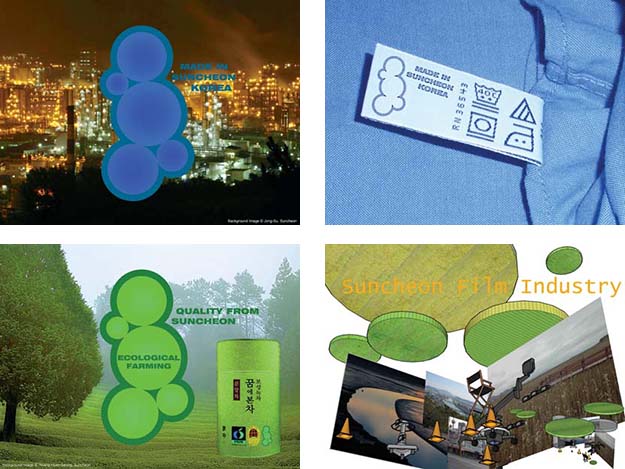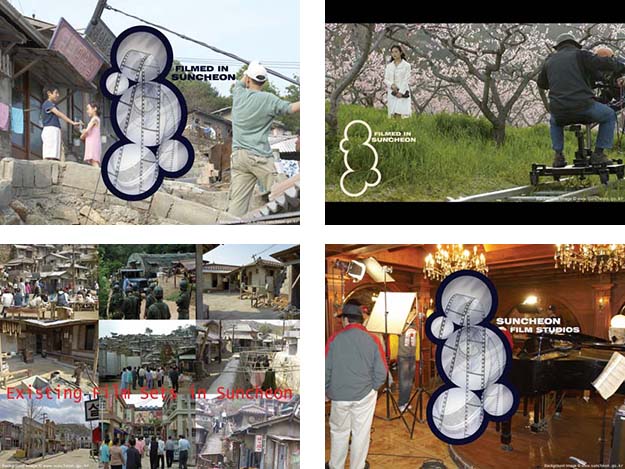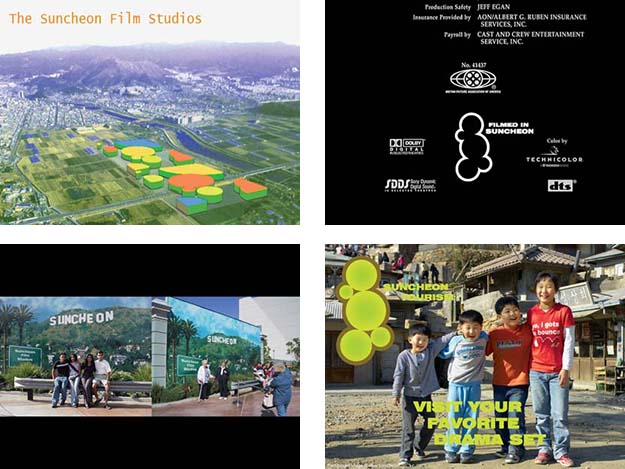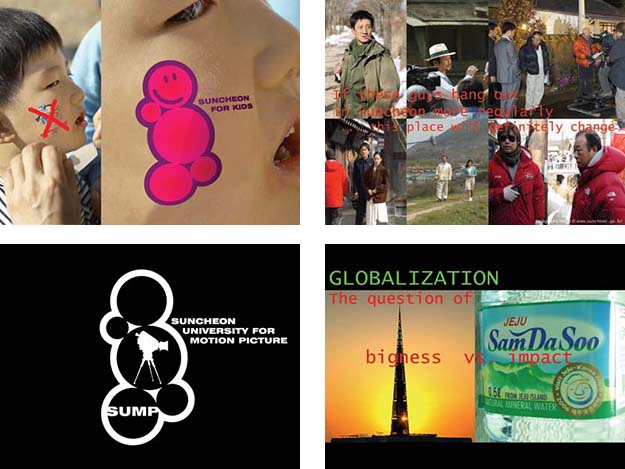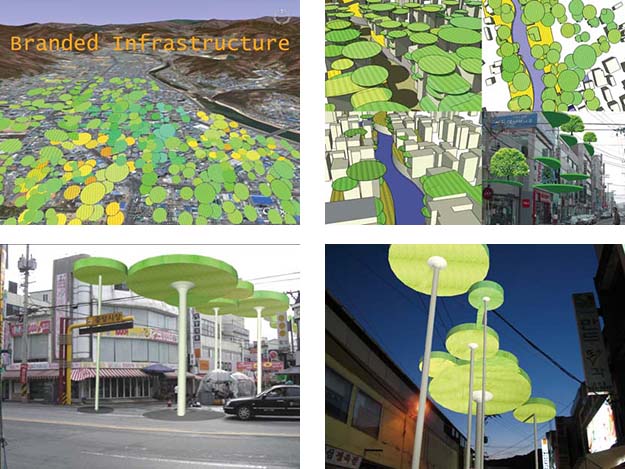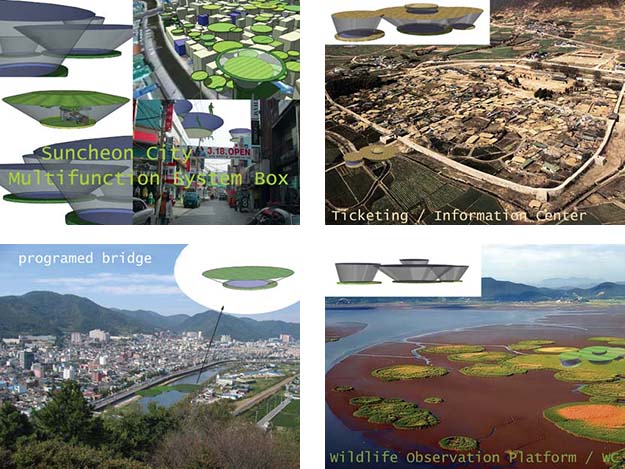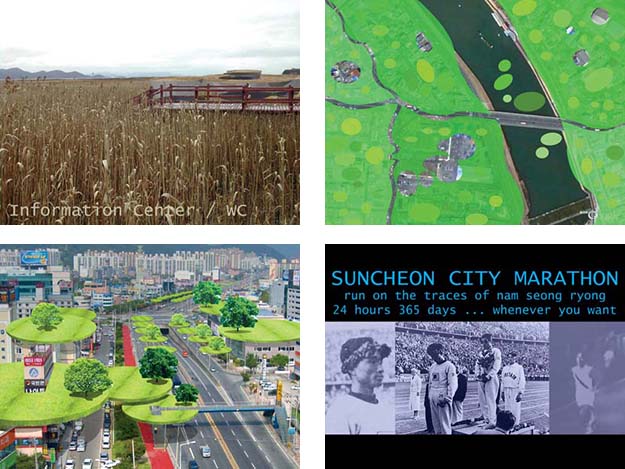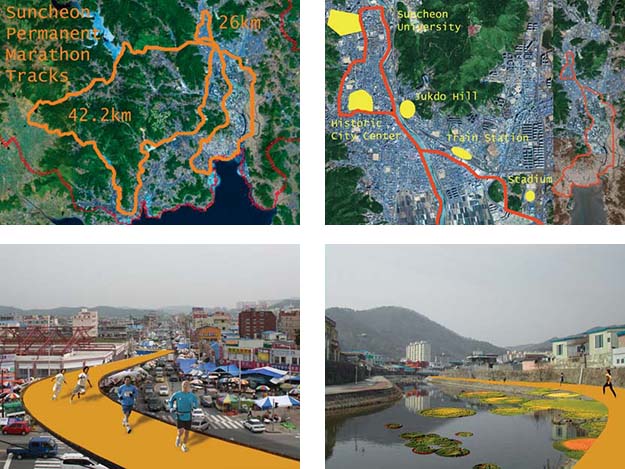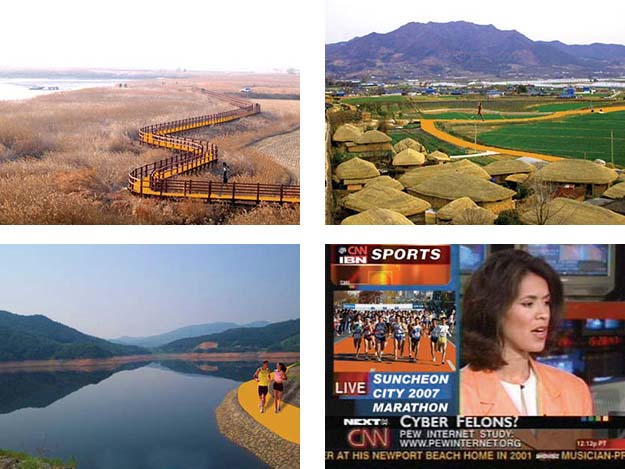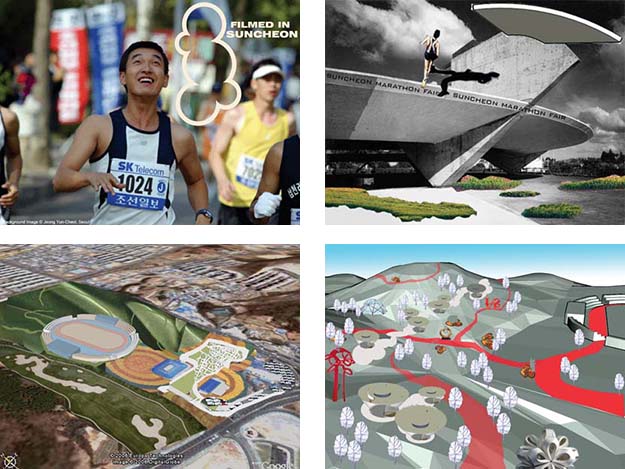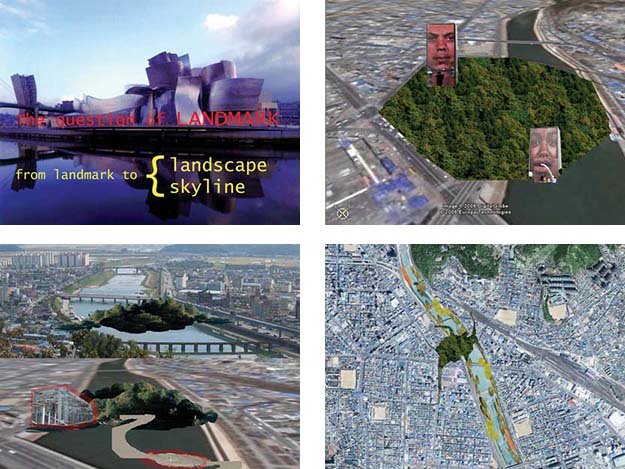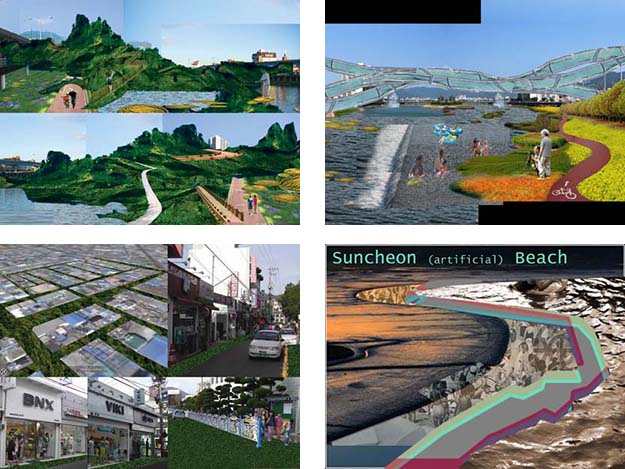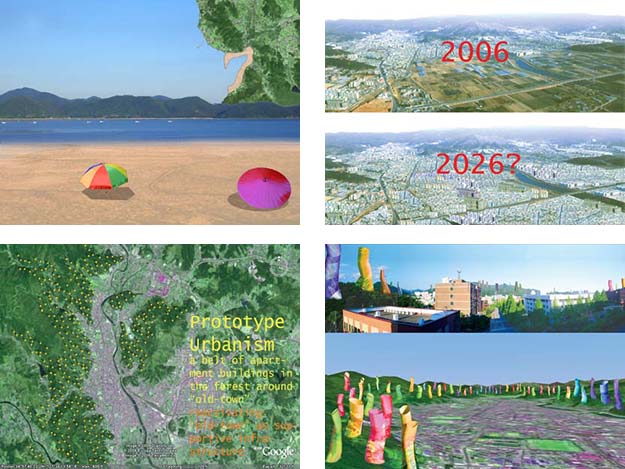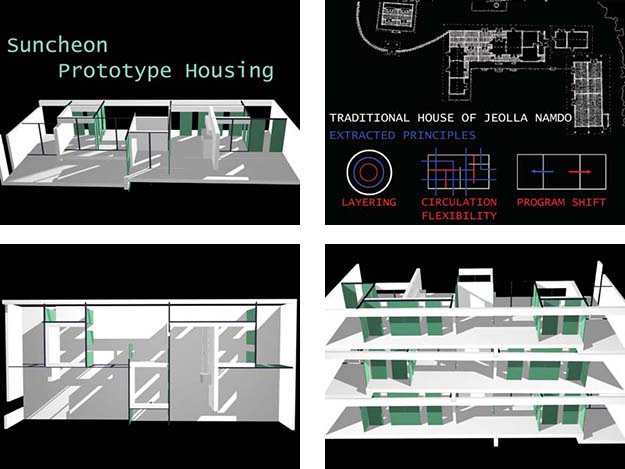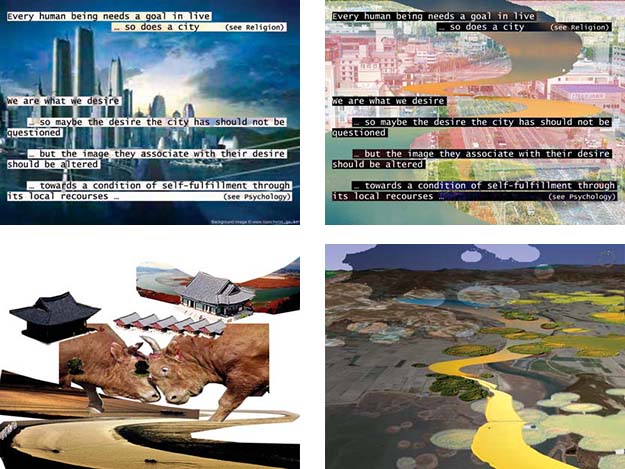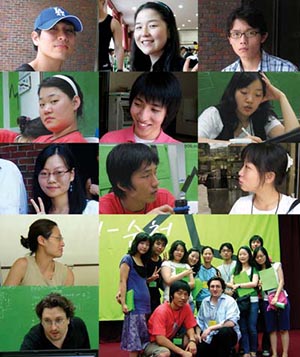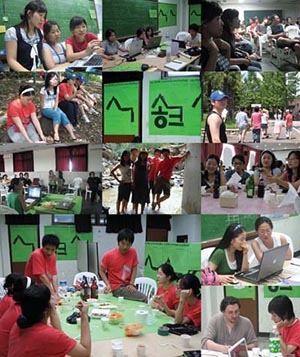|
prototyping - local
strategies and global thinking
studio ryul song, christian schweitzer
with jeungyoung joo, jaewon cho, hyerin ahn, jijeung park, kiseup
chang, hyunah shin, yongbu kim, hyunyoung lee, sunchul bea
in sa 2006 summer workshop_hyper.polis II_slow city suncheon, sa
school /
sa seoul association of architects
workshop july 29 - aug. 04 2006, the suncheon university, suncheon
exhibition aug. 18 - 25 2006, soeytdae museum, seoul
exhibition aug. 27 - 30 2006, suncheon city hall, suncheon
content: synopsis / studio work / post-suncheon /
exhibition /
publication
Synopsis / Prototyping - Local Stategies and Global Thinking
by Christian Schweitzer
A large group of architects and architecture students based in Seoul
will visit Suncheon and dream up schemes that completely change the
face of a place that they will probably never visit again. "Models and
drawings will establish a dramatic contrast between the fabric of the
existing city and a wide array of exotic implants. It's a kind of
invasion by architecture, a foreign takeover. We, the outsiders,
arrogantly project our fantasies onto someone else's city. Do we really
understand the local traditions, rhythms, pathology and complications?
What kind of feel do we have for the place? Can it be anything other
than the superficial feel of the tourist, even if it is the earnest
tourist who deliberately wanders away from the guided tour to take
snaps of unadvertised local color? Tourists, like any other kind of
invaders, always leave their mark. Architects simply want to leave huge
marks. As they travel through the world, they imagine it completely
transformed behind them. They want to leave a trail of architecture, a
shiny wake of memorable structures. Always on the move, the architect
is a kind of industrial harvester, relentlessly churning up
unsuspecting cities, mixing elements picked from other places into the
mulch of building parts and depositing tightly bundled assemblages
behind them."1)
Since the emergence of the Bilbao-effect more and more "provincial"
cities try to utilize this psychology inherent to the architect. At
awareness of their preconceived local image in the national
consciousness they immediately try to jump from local to global, to
place themselves on the global map as a hyper-national enclave. On this
global map the prevalent definitions of what is metropolitan and what
is provincial, what is global and what is local, are obsolete. "Rome is
no longer in Rome, it is everywhere I am."2)
The carrier wave to achieve this goal is either high-technology or
high-culture and therefore per definition unrelated to a physical
location. The city plugging into this global flow provides a stopover,
facilitates the data stream with a node to materialize for a
millisecond in order to re-induct the produced data back into the flow.
The local identity is replaced by a trans-national generic identity
that strangely enough rediscovers suppressed staggered-pieces of the
local consciousness in order to stay distinguishable. By confronting
the local with the global, by making them comparable "identity
centralizes; it insists on an essence, a point."3)
Therefore despite all criticism the global has a distinct potential to
generate an individual identity on a local scale. Not through the
architectural representation of a cultural institution which at start
is needed to perform the linking process to the global, but through the
re-development of the local infrastructure. The Bilbao-effect initiated
by an outstanding piece of architecture resulted in a complete makeover
of the existing city, a fundamental upgrade of the infrastructure (road
network, public transportation, commercial zones, business parks),
numerously new jobs (most of them surprisingly not related to tourism)
and therefore attracted new inhabitants (not to confuse with the
tourists) which had to be accommodated in new housing developments. So
the result of linking to the global is growth which is the equivalent
of alienation which causes the antagonism of evolvement and
reinforcement of a re-defined local identity.
Looking at the Korean countryside one crucial aspect of the
city-infrastructure immediately catches one's eye: the Korean apartment
building 'APT'. Developed as a solution to satisfy a pressing demand
for mass accommodation in the exploding metropolis of Seoul in the
1980s it faces the absurd tendency of being placed even into the
smallest village in the Korean sticks destroying its scale, density and
primarily its identity. The first and biggest thing I see approaching a
new city is the same I just saw leaving the latter, so my memory of the
place is immediately submerged into a primordial soup before it could
even evolve. The explanation to this phenomenon lies in the
transformation of the APT from a physical and functional solution for
the middle class to a metaphysical and sociological imperative serving
all classes of Korean society. Due to the engrained desire of Koreans
to move up into an always higher ranking socio-economical class the APT
has become a non-place for hopes and dreams disconnected from a
physical location.4) The global
linkage of a city demands the opposite:
the individualization of the fundamentals of life. In this development
housing plays a central role. The very basic canvas of every-day life
has to localize, has to give a distinct local identity that places the
inhabitant out of a national context into the global linkage by
emphasizing the physical location ergo the local ...
... so let's go to
Suncheon and develop a
piece of "downtown" or the
periphery, or even start a new city in the middle of nowhere, and so
trigger the boom that puts the city on the map.3)
For the workshop preparation the students will be asked to analyse the
Suncheon City advertising film in the respects of the expressed needs
and desires of Suncheon as a global city, and to compare it with
similar self-profiling of other cities. From this analysis
architectural and conceptual strategies to "brand" the city should be
developed and tested through the media of film and collage. Furthermore
the students have to identify through the digital map, image material
and satellite photos possible areas in and around Suncheon that
represent a distinct local identity in topography, relation to nature
and infrastructure and carry the potential of a far reaching impact
through architectural development. First evaluations have to be made to
define adequate typologies and first ideas for an urban planning
strategy have to be developed.
In the beginning of the main workshop according to the results of the
pre-studies a development area and an urban planning strategy will be
determined. The students then will be asked to design scenario
solutions for the global branding of the city of Suncheon according to
the theme of "Prototyping - Local Strategies and Global Thinking" with
the focus on generating new typologies evolving from local
characteristics that can be adapted to a global knowledge.
Notes:
1) Paraphrased from Mark Wigley, "Local Knowledge," in show your hand
(Frankfurt, Germany 2000), p. 5-7;
2) Jean Racine, "Rome n'est plus dans Rome; elle est toute ou je
suis."quoted in Guy Debord, "Comments on the Society of the Spectacle"
(Paris, France 1988);
3) Paraphrased from Rem Koolhaas, "The Generic City", in S,M,L,XL (New
York, USA 1995), p.1238-1267;
4) Compare with Kim Kwang-soo, "The Other Public Space: The Korean
'-Bang' Culture," in Germany Korea Public Space Forum (Frankfurt,
Germany 2005), p. 63-73.
|
|
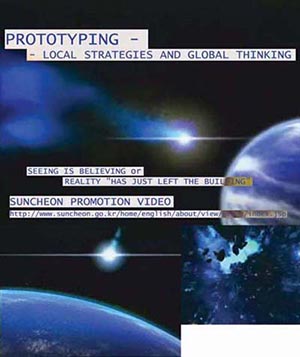

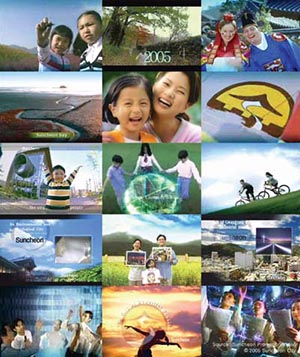
Filmstills from the Suncheon Promotion Video
http://www.suncheon.go.kr/index.jsp
(c) 2005 Suncheon City
|



